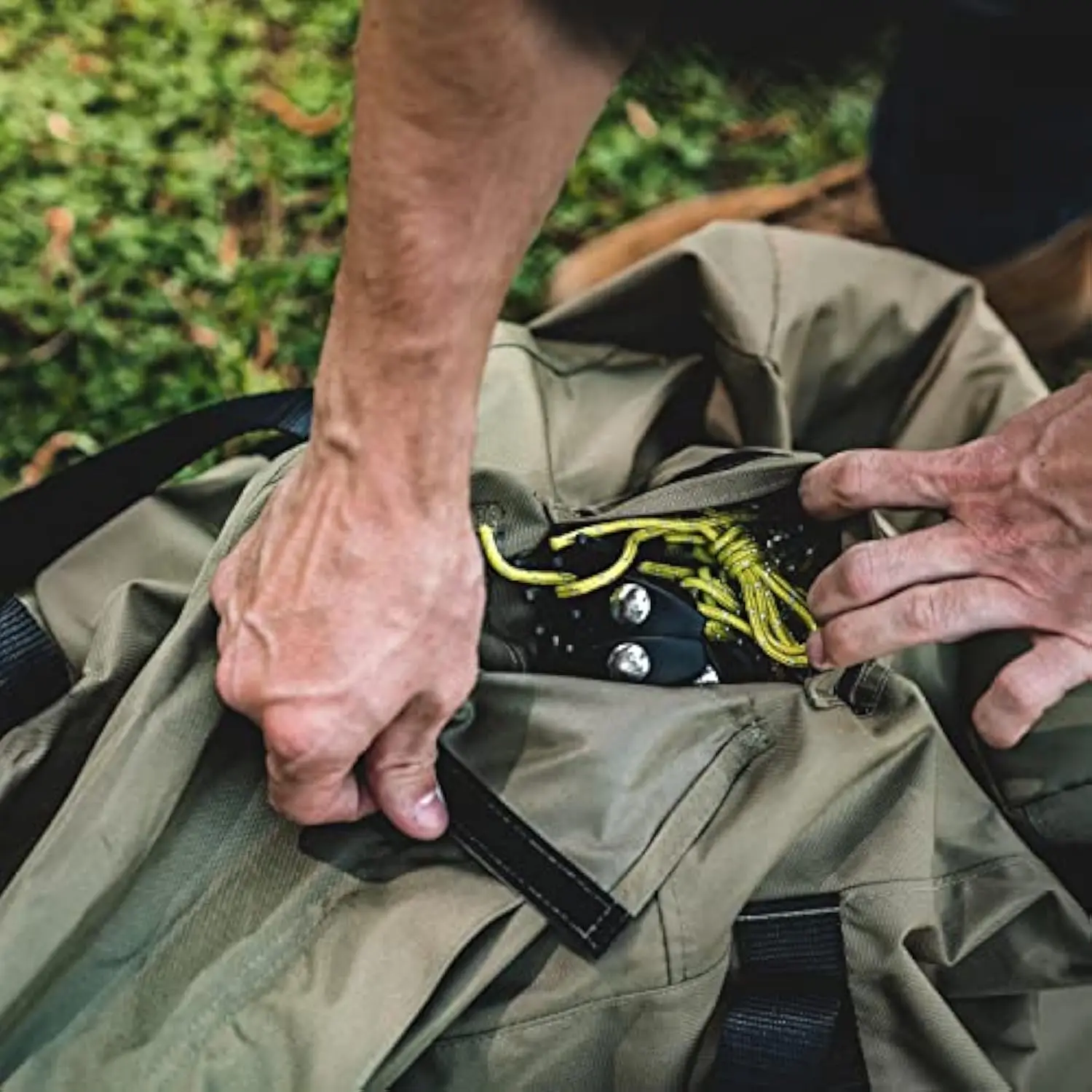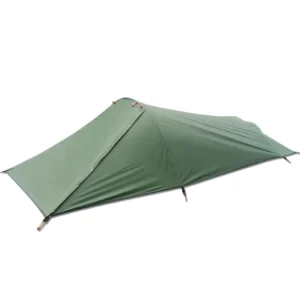Introduction: Why Choosing the Right Compact Two-Person Shelter Matters
When venturing into the great outdoors as a pair, your shelter choice can make or break your experience. A truly “compact” two-person shelter strikes the perfect balance between minimal weight and packed size while providing adequate comfort for two people. These shelters typically weigh between 2-4 pounds (0.9-1.8 kg) and pack down to the size of a large water bottle or smaller.
Finding this balance is crucial for several reasons:
- Every ounce matters when you’re dividing gear between two packs
- Comfort becomes increasingly important when sharing limited space
- Weather protection must be reliable for two bodies generating heat and moisture
- Setup should be manageable even when tired or in challenging conditions
The right compact shelter serves various adventurers, from weekend backpackers to dedicated thru-hikers, bikepackers, and even minimalist car campers looking to save trunk space. At Explore Elements, our testing process involves real-world use across diverse environments—from rainy Pacific Northwest forests to windy alpine zones—to ensure our recommendations truly perform.
In this guide, you’ll learn about different shelter types, key selection criteria, top recommendations for various needs, and practical tips for maximizing your two-person shelter experience. Understanding the fundamentals of choosing ultimate compact shelter for two will transform how you approach your next outdoor adventure, ensuring you have the perfect balance of protection and portability.
Let’s explore the wide variety of 2-person backpacking tents and other shelter options to find your perfect match.
Understanding Different Types of Compact Shelters for Two
When selecting a shelter for two campers, understanding the fundamental design differences helps narrow down your options to match your specific needs:
Double-Wall Tents
These traditional designs feature two separate components: an inner mesh body and an outer waterproof rainfly. This separation creates excellent ventilation and condensation management—crucial when two people occupy a small space. Double-wall tents typically weigh 2.5-4 pounds (1.1-1.8 kg) and offer reliable protection in various conditions.
Benefits: Superior condensation management, versatile (can use just the inner mesh on clear nights), familiar setup
Drawbacks: Slightly heavier, more parts to manage, typically larger packed size
Single-Wall Tents
These streamlined shelters combine the rainfly and tent body into one integrated piece, saving significant weight. At 1.5-3 pounds (0.7-1.4 kg), they’re among the lightest freestanding options available. However, condensation can be more challenging to manage with two occupants.
Benefits: Lighter weight, faster setup, smaller packed size
Drawbacks: Condensation challenges, often less ventilation, typically less interior space
Trekking Pole Shelters
These innovative designs replace dedicated tent poles with your trekking poles, dramatically reducing weight. Many trekking pole backpacking tent options weigh just 1-2.5 pounds (0.45-1.1 kg), making them favorite choices for weight-conscious adventures. The ultralight trekking pole tent category offers some of the lightest shelter options available.
Benefits: Extremely lightweight, often spacious designs, multi-use gear efficiency
Drawbacks: Requires trekking poles, typically non-freestanding, steeper learning curve
Tarps and Tarp-Tents
The minimalist approach, tarps provide basic weather protection at the absolute minimum weight (often under 1 pound/0.45 kg). Tarp-tents add some bug protection and floor while maintaining impressive weight savings. These options require more skill but reward users with ultimate portability.
Benefits: Ultralight, versatile pitching options, excellent ventilation
Drawbacks: Requires experience to pitch effectively, limited bug protection (for basic tarps), less protection in severe weather
Hammock Systems
A different approach altogether, hammock systems suspend two campers above the ground. When properly equipped with rain tarps and bug protection, they can provide comfortable sleep while eliminating the need for flat ground.
Benefits: No need for flat ground, potential comfort advantages, unique experience
Drawbacks: Requires suitable trees, learning curve, separate systems often needed for two people
Exploring different camping shelter options for two reveals that no single design is perfect for everyone. Your ideal choice depends on your priorities regarding weight, comfort, setup simplicity, and the environments you’ll encounter.
Key Factors to Consider When Choosing a Compact Two-Person Shelter
Weight and Packed Size
For backpacking pairs, this is often the primary consideration. Total shelter weight ideally stays under 3 pounds (1.4 kg) for lightweight trips and under 2 pounds (0.9 kg) for ultralight adventures. Remember to consider how you’ll divide the components between two packs.
Packed size matters almost as much as weight—a compact shelter should ideally pack down to roughly the size of a 1-liter water bottle or smaller to maximize backpack space.
Interior Dimensions and Livability
Raw floor dimensions tell only part of the story. Consider:
– Floor area: Ideally 25-30 square feet (2.3-2.8 square meters) minimum
– Peak height: 40+ inches (101+ cm) allows most people to sit up
– Wall angles: More vertical walls create more usable space
– Width at shoulder height: Crucial for comfortable side-by-side sleeping
Understanding what size tent good for 2 people helps prevent disappointment when setting up camp after a long day’s hike. Many campers ask is a 2-person tent actually big enough, and the answer depends greatly on your specific needs and sleeping setup.
Weather Protection
A compact shelter must still provide reliable protection from the elements:
– Waterproofing: Look for rainfly materials with 1,500+ mm hydrostatic head ratings
– Wind resistance: Consider pole structure, guy-out points, and pitch stability
– Ventilation: Critical for managing condensation from two occupants
– Seasonal rating: Most compact shelters are 3-season, though some ultralight options may sacrifice some weather resistance
Durability vs. Weight
Lighter shelters often use thinner materials:
– Floor fabric: 15-30 denier for ultralight, 30-70 denier for better durability
– Rainfly fabric: 10-20 denier for ultralight, 20-40 denier for better longevity
– Pole materials: Aluminum (lighter) vs. composite (more durable)
Consider your typical usage—weekend adventurers might prefer slightly more durable materials than thru-hikers focused on minimum weight.
Vestibule Space
With two people in a compact shelter, camping tent vestibule space becomes essential for storing packs, boots, and cooking in poor weather. Look for:
– Total vestibule area: 8+ square feet (0.75+ square meters) per person
– Configuration: One large vestibule vs. two smaller ones (one per door)
– Coverage: Sufficient depth to protect gear and possibly cook in rainy conditions
Two Doors vs. Single Door
For two campers, having two doors significantly improves convenience:
– Eliminates climbing over your partner for midnight bathroom breaks
– Provides individual entry/exit and gear storage areas
– Improves ventilation options
– Often creates more usable interior space
While single-door designs save weight, the convenience of two doors is worth considering for longer trips.
Setup Complexity
After a long day of hiking, you’ll appreciate a shelter that pitches quickly:
– Freestanding designs set up faster on difficult ground
– Semi-freestanding options balance weight savings with reasonable setup speed
– Non-freestanding shelters (many trekking pole designs) require more time and skill
– Consider setup in adverse conditions (rain, wind, darkness, fatigue)
Best Overall Compact Tent for Two Campers
The ideal all-around compact shelter for two balances weight, space, weather protection, and convenience without excelling in any single category. Our top recommendation delivers exceptional performance across all these metrics.
Key Specifications:
– Weight: 2.8 pounds (1.27 kg)
– Packed Size: 16 × 6 inches (40.6 × 15.2 cm)
– Floor Area: 28.5 square feet (2.65 square meters)
– Peak Height: 42 inches (106.7 cm)
– Doors: 2
– Vestibule Area: 18 square feet (1.67 square meters) total
Performance Highlights:
This shelter demonstrates excellent stability in winds up to 30 mph (48 km/h) and keeps occupants completely dry through extended rainfall. The near-vertical walls maximize the usable interior space, allowing two adults to sit up simultaneously without touching the ceiling—a rare feature in truly compact shelters.
Livability for Two:
The rectangular floor plan accommodates two 25-inch (63.5 cm) wide sleeping pads with a few inches to spare. Two large doors and vestibules create individual entry/exit zones, eliminating the need to climb over your partner. Interior pockets at both ends provide accessible storage for essentials.
Pros:
– Excellent balance of weight and livability
– True weather protection for extended trips
– Quick, intuitive setup (under 5 minutes)
– Durable materials relative to its weight class
– Excellent ventilation prevents condensation issues
Cons:
– Not the absolute lightest option
– Premium price point
– Requires careful handling of the lightweight materials
For those seeking reliable, comfortable shelter without excessive weight, our top recommendation from our best compact shelters for two collection provides versatility across environments. Browse our selection of compact backpacking tent options to find your perfect balance of features.
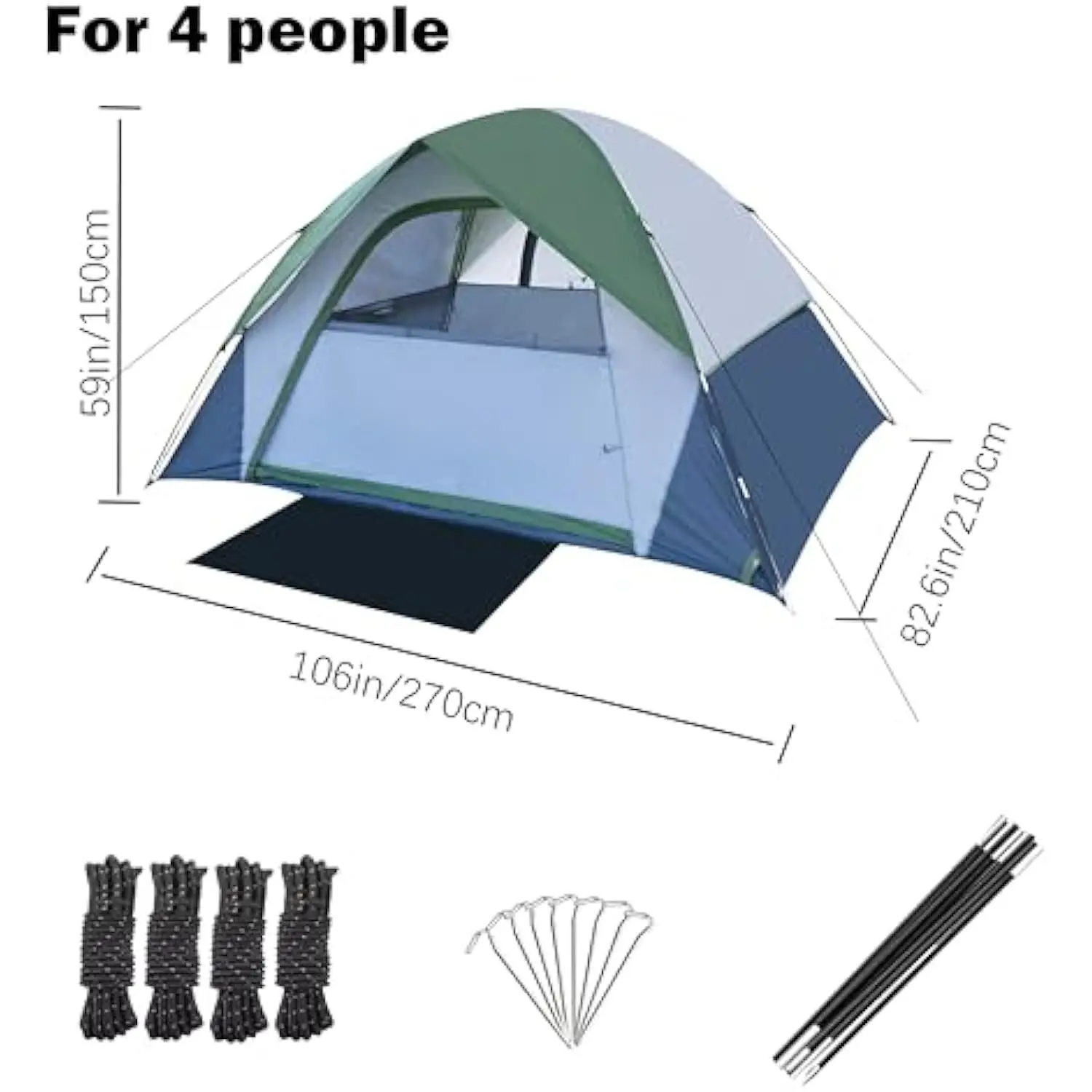
Best Ultralight Compact Shelter for Two
For those prioritizing absolute minimum weight without sacrificing protection, our ultralight recommendation pushes the boundaries of engineering while remaining practical for two campers.
Key Specifications:
– Weight: 1.6 pounds (0.73 kg)
– Packed Size: 12 × 4.5 inches (30.5 × 11.4 cm)
– Floor Area: 25 square feet (2.32 square meters)
– Peak Height: 40 inches (101.6 cm)
– Doors: 1 large front entry
– Vestibule Area: 10 square feet (0.93 square meters)
Weight Savings Design:
This trekking pole shelter eliminates dedicated poles, using your hiking poles for structure—multifunctional gear at its finest. The 10-denier silnylon construction cuts weight significantly while maintaining surprisingly good durability when handled with care.
Weather Performance:
Despite its minimal weight, this shelter withstands moderate storms admirably. The tapered design sheds wind effectively, while the full-coverage rainfly extends nearly to the ground. The thoughtful ventilation system manages moisture remarkably well considering the ultralight materials.
Compromises:
To achieve this remarkable weight, certain compromises are inevitable:
– The single door requires coordination between campers
– Interior volume is more limited, with less vertical sidewall space
– Setup requires more practice and attention to proper tensioning
– Materials demand more careful handling than heavier alternatives
Ideal Uses:
This ultralight shelter excels on long-distance thru-hikes, backpacking trips where every ounce matters, or any adventure where you’ll carry your shelter for many miles between camps. It’s particularly well-suited for experienced backpackers who understand the care required for ultralight gear.
Explore our collection of ultralight 2-person tents and read about the best ultralight hiking tents 2025 for more weight-saving shelter options.
Best Budget-Friendly Compact Two-Person Tent
Quality protection doesn’t have to break the bank. Our budget recommendation delivers reliable performance at a significantly lower price point than premium options.
Key Specifications:
– Weight: 3.5 pounds (1.59 kg)
– Packed Size: 18 × 6 inches (45.7 × 15.2 cm)
– Floor Area: 29 square feet (2.69 square meters)
– Peak Height: 43 inches (109.2 cm)
– Doors: 2
– Vestibule Area: 16 square feet (1.49 square meters) total
Value Proposition:
While slightly heavier than premium alternatives, this shelter delivers where it matters most: reliable weather protection, reasonable durability, and comfortable space for two. The modest weight penalty (about 12-16 ounces/340-450 g more than high-end alternatives) is a reasonable tradeoff for the substantial cost savings.
Performance Analysis:
In our field testing, this budget shelter remained completely dry through multiple rainstorms and handled moderate winds (15-20 mph/24-32 km/h) without issue. The somewhat heavier fabrics actually enhance durability, potentially offering better long-term value for occasional backpackers.
Where Cost-Cutting Shows:
– Slightly heavier and bulkier materials
– Basic (but functional) zipper quality
– Less refined pole connections
– Fewer included accessories
– Less specialized fabrics for condensation management
Ideal Users:
This shelter is perfect for weekend backpackers, those new to backpacking who aren’t ready for a major investment, or as a solid backup shelter. It’s especially well-suited for 2-person pop-up tents users looking to graduate to more backcountry-friendly options without spending premium prices.
Most Durable Compact Shelter for Two
For challenging environments or users who prioritize longevity over minimum weight, our durability-focused recommendation offers exceptional toughness while remaining reasonably portable.
Key Specifications:
– Weight: 3.9 pounds (1.77 kg)
– Packed Size: 19 × 7 inches (48.3 × 17.8 cm)
– Floor Area: 30 square feet (2.79 square meters)
– Peak Height: 44 inches (111.8 cm)
– Doors: 2
– Vestibule Area: 20 square feet (1.86 square meters) total
Durability Features:
This shelter incorporates several key elements that enhance longevity:
– 70-denier floor fabric (2-3× thicker than ultralight alternatives)
– Reinforced stress points throughout the construction
– Heavy-duty YKK zippers with protective flaps
– DAC aluminum poles with enhanced wall thickness
– Overbuilt stake-out points with cordura reinforcement
Weather Resistance:
The robust construction excels in harsh conditions. During testing, this shelter remained rock-solid in sustained 35 mph (56 km/h) winds and showed no water penetration through multiple days of continuous rain. The waterproof backpacking tent design features a higher hydrostatic head rating (3000mm+) than most competitors.
Weight Considerations:
The durability comes at a cost of approximately 1-2 pounds (0.45-0.9 kg) over the lightest options. However, this weight is thoughtfully allocated to the highest-stress components, maximizing durability benefit per ounce added.
Value Proposition:
While initially more expensive than budget options, this shelter’s extended lifespan makes it economical over time. Many users report 7+ years of regular use without significant deterioration—far longer than ultralight alternatives.
For those seeking long-term reliability, explore our collection of durable tents all seasons to find options that will withstand years of adventure.
Easiest Setup Compact Two-Person Tent
When fatigue, darkness, or adverse weather makes complex setup challenging, a shelter designed for quick and intuitive pitching becomes invaluable.
Key Specifications:
– Weight: 3.2 pounds (1.45 kg)
– Packed Size: 17 × 6.5 inches (43.2 × 16.5 cm)
– Floor Area: 28 square feet (2.6 square meters)
– Peak Height: 41 inches (104.1 cm)
– Doors: 2
– Vestibule Area: 15 square feet (1.39 square meters) total
Setup Process:
The genius of this shelter lies in its integrated hub-pole design that virtually eliminates assembly confusion. The color-coded connection points and pre-attached rainfly allow for:
– Complete setup in under 3 minutes, even for novices
– One-person setup capability despite being a two-person shelter
– Reliable tensioning without complex adjustments
– Stability even when pitched hastily
Real-World Performance:
The intuitive design particularly shines in challenging conditions—we successfully timed a complete setup in under 2 minutes during steady rainfall, with the interior remaining dry throughout the process. The freestanding design allows for adjustment after initial setup to optimize positioning.
Other Notable Features:
Beyond the quick setup, this shelter offers well-designed ventilation, adequate interior space for two, and reasonable weather protection. The materials balance durability and weight effectively for a shelter in this category.
Trade-offs:
– Slightly heavier than minimum-weight options
– Less packable due to the integrated pole structure
– Premium price point
– Less adaptable to unusual ground conditions
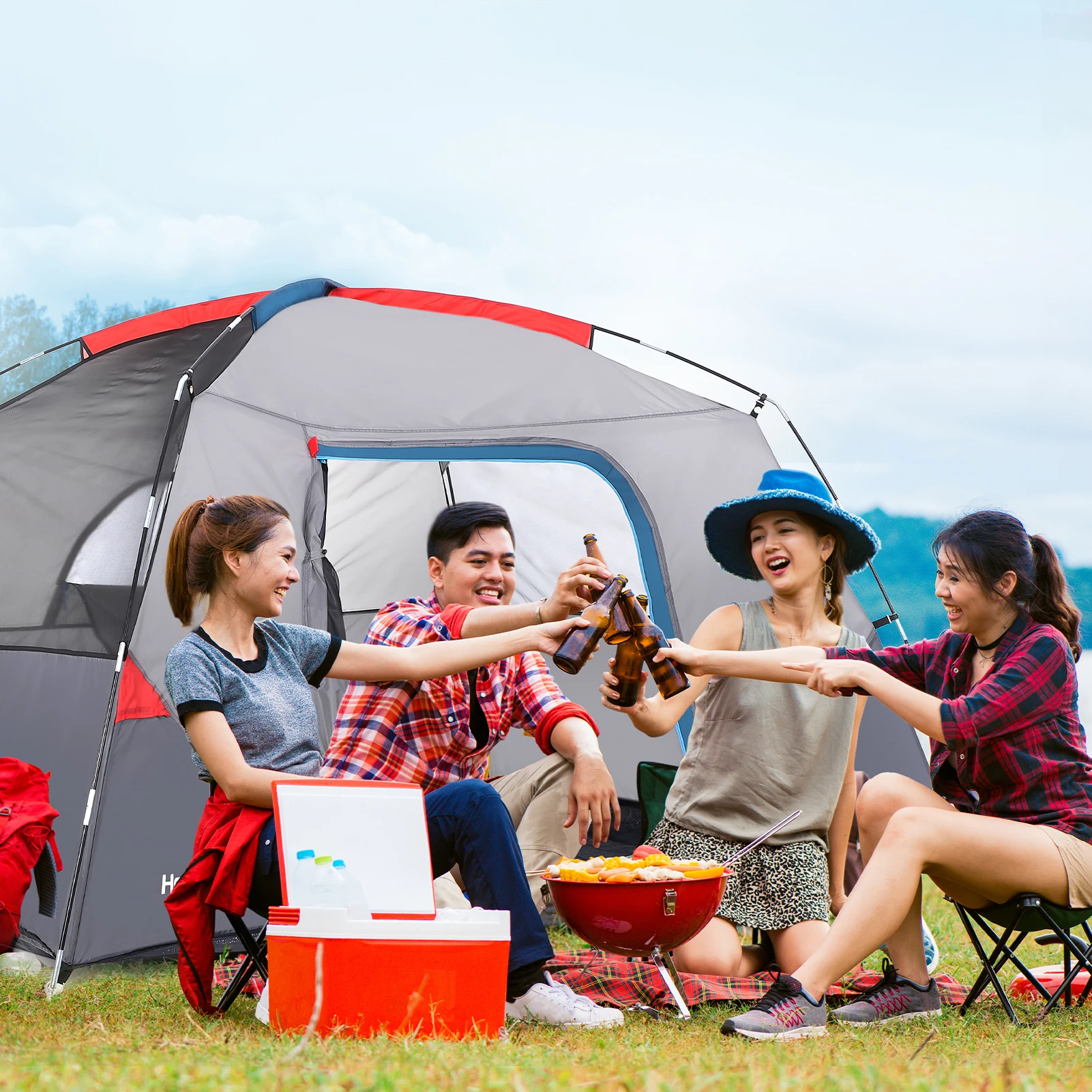
Mastering two-person lightweight tent setup becomes remarkably simple with these intuitive designs. Explore our collection of easy setup camping tent options to find the perfect balance of convenience and performance.
Most Versatile Compact Shelter System for Two
For adventurers who face varying conditions or simply appreciate adaptability, a modular shelter system offers unmatched versatility without carrying multiple shelters.
Key Specifications:
– Full Configuration Weight: 3.2 pounds (1.45 kg)
– Minimalist Configuration: 1.8 pounds (0.82 kg)
– Packed Size: 16 × 6 inches (40.6 × 15.2 cm)
– Floor Area: 28 square feet (2.6 square meters)
– Peak Height: 42 inches (106.7 cm)
– Doors: 2
– Vestibule Area: 16 square feet (1.49 square meters) total
Configuration Options:
This ingenious system allows multiple setup options depending on conditions:
– Complete double-wall tent for maximum protection
– Rainfly + footprint for lightweight protection with ground barrier
– Inner tent alone for bug protection on clear nights
– Rainfly alone as a minimalist shelter for experienced users
– Fast-fly configuration using trekking poles for ultralight travel
Component Weights:
– Inner tent: 1.4 pounds (0.64 kg)
– Rainfly: 1.1 pounds (0.5 kg)
– Poles: 0.7 pounds (0.32 kg)
– Footprint: 0.3 pounds (0.14 kg)
Weather Adaptability:
The system performs admirably across environments, from desert heat (using only the inner mesh for ventilation) to alpine storms (full configuration with extra guy-outs). The adaptability extends the practical usage season beyond typical 3-season shelters when used knowledgeably.
Learning Curve:
While the versatility is impressive, mastering all configurations requires practice. However, the standard setup remains straightforward, making this suitable for users at various experience levels.
Our freestanding backpacking tent collection includes several versatile options that adapt to changing environments and user needs.
Lightweight Backpacking Tent, Ultralight Backpacking Tent, Ultralight Bivy Tent
Ultralight Single Person Camping Tent with Aluminum Poles for 3-Season Backpacking Waterproof DesignPrice range: $94.88 through $326.82 Select options This product has multiple variants. The options may be chosen on the product pageLightweight Backpacking Tent, Ultralight Backpacking Tent, Waterproof Backpacking Tent
$391.05 Select options This product has multiple variants. The options may be chosen on the product pageCompact Backpacking Tent, Lightweight Backpacking Tent, Waterproof Camping Tent
$335.52 Select options This product has multiple variants. The options may be chosen on the product pageUltralight Backpacking Tent, Ultralight Dome Tent, Winter Camping Tent
Price range: $369.63 through $370.07 Select options This product has multiple variants. The options may be chosen on the product pageCamping Tent with Vestibule, Waterproof Camping Tent
Price range: $407.89 through $479.48 Select options This product has multiple variants. The options may be chosen on the product pageHeavy Duty 4 Season Tent, Ultralight Freestanding Tent, Winter Camping Tent
$3,722.66 Select options This product has multiple variants. The options may be chosen on the product page
Weather Resistance: Keeping Two Campers Dry and Protected
A compact shelter’s primary function is protecting you from the elements. Understanding weather resistance features helps you select appropriate protection for your adventures.
Understanding Waterproofing Ratings
Waterproofing is measured by hydrostatic head ratings, indicating how much water pressure a fabric can withstand:
– 1,000-1,500mm: Adequate for light rain and brief showers
– 1,500-3,000mm: Good for extended rain and moderate conditions
– 3,000mm+: Excellent for severe, sustained precipitation
For two campers generating body heat and moisture, higher ratings become more important as internal condensation adds to the challenge.
Bathtub Floors: Your First Line of Defense
A well-designed “bathtub floor” extends fabric up the shelter walls several inches, preventing splashback and ground-level water from entering. Look for:
– Minimum 3-inch (7.6 cm) height for basic protection
– 5+ inch (12.7+ cm) height for superior protection
– Taped seams throughout floor and lower walls
– Higher denier (thicker) material on the floor than walls
Vestibule Design for Weather Management
Vestibules provide critical transitional space between the wet outside and dry interior. Effective designs offer:
– Sufficient depth to enter/exit without rain reaching interior
– Proper drainage away from the shelter entrance
– Cooking position options that maintain ventilation
– Door configurations that minimize water entry during access
The best waterproof pop-up tent options incorporate these features while maintaining reasonable weight and setup simplicity.
Wind Stability Considerations
With two occupants, wind stability becomes even more important as there’s less margin for shelter deformation:
– Guy-out points: Look for multiple reinforced attachment points
– Pole structure: Cross-pole designs typically offer better stability
– Pitch orientation: Learn to position your shelter optimally relative to wind direction
– Stake quality: Upgrade from basic stakes for challenging conditions
Condensation Management for Two
Two people generate approximately twice the moisture through respiration and perspiration, making condensation management critical in compact shelters:
– Prioritize adequate ventilation options that work even during rainfall
– Consider double-wall designs for better moisture management
– Learn to adjust ventilation based on conditions and occupancy
– Position sleeping areas away from tent walls to prevent contact with condensation
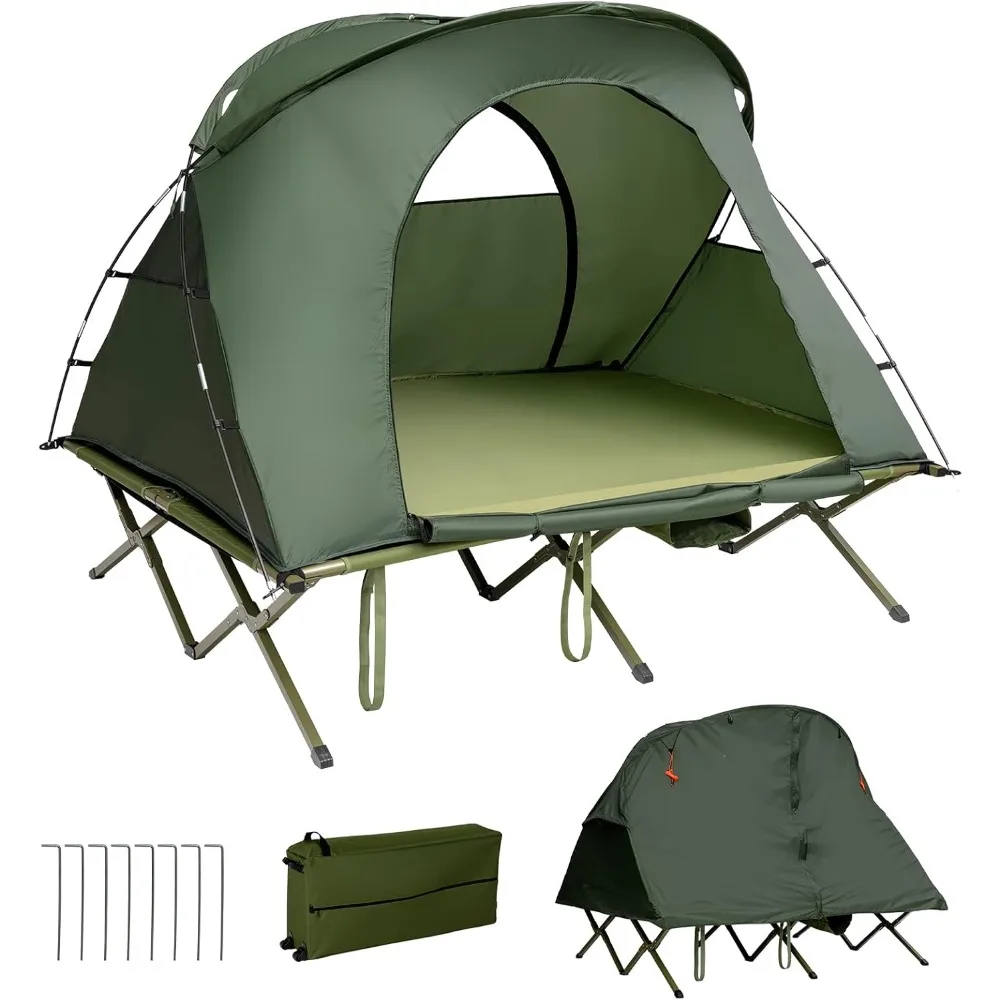
Optimizing Interior Space in Compact Two-Person Shelters
Making the most of limited space transforms a cramped shelter into a comfortable haven. These strategies maximize livability for two campers:
Interior Organization Systems
Thoughtful organization prevents chaos in close quarters:
– Utilize built-in pockets for frequently needed items
– Add lightweight gear lofts for additional overhead storage
– Use small stuff sacks attached to loops for organizing small items
– Establish “zones” for each camper’s personal gear
Gear Storage Strategies
Managing two people’s equipment requires planning:
– Store clean, dry items inside and dirty/wet items in vestibules
– Use compression sacks to minimize bulk of clothing and sleeping bags
– Stack items vertically rather than spreading horizontally
– Consider what truly needs protection versus what can stay outside
Optimizing Sleeping Arrangements
Sleeping pad selection and arrangement significantly impacts comfort:
– Consider tapered or mummy-shaped pads to maximize floor space
– Align pads in the same direction to utilize the shelter’s shape
– Try slightly overlapping pads at the foot end where less room is needed
– Consider inflatable pillows that pack tiny but add significant comfort
Entry and Exit Coordination
With two people, coordinated movement prevents frustration:
– Establish a routine for night-time bathroom breaks
– Keep headlamps and footwear in consistent, accessible locations
– Consider who sleeps closest to the door(s) based on habits
– Communicate movement plans to avoid disturbing your partner
Finding your perfect space-saving tent for two involves both the right shelter selection and smart usage strategies that maximize every square inch of protection.
Setting Up Your Compact Shelter: Tips for Two Campers
A well-coordinated team approach to shelter setup saves time and prevents frustration, especially in challenging conditions.
Site Selection Fundamentals
The perfect spot makes all the difference:
1. Find level ground with good drainage
2. Check overhead for dead branches or other hazards
3. Consider sun position for morning warmth/afternoon shade
4. Note wind direction and position shelter accordingly
5. Look for natural windbreaks without flood risk
6. Avoid low spots where cold air and moisture collect
Efficient Two-Person Setup Process
Divide responsibilities for maximum efficiency:
1. Person A unpacks and organizes components while Person B clears the site
2. Person A handles pole assembly while Person B prepares stakes and guy lines
3. Together, attach poles to shelter body (if applicable)
4. Person A holds structure while Person B stakes corners
5. Together, attach rainfly (if separate)
6. Person A adjusts tension while Person B secures remaining stakes
7. Both fine-tune guy lines for optimal tension
This coordinated approach typically cuts setup time by 30-50% compared to a single person.
Achieving a Taut Pitch
A properly tensioned shelter improves weather resistance and space:
– Stake corners first, then adjust position before completing setup
– Use adjustable guy lines for fine-tuning without relocating stakes
– Apply even tension across opposing sides
– Account for ground softening if rain is expected
– Re-tension before sleeping and after significant weather changes
Bad-Weather Setup Strategies
When conditions are challenging:
1. Keep the rainfly accessible at the top of your pack
2. Consider attaching the rainfly before pitching in rainy conditions
3. Use the “rainfly first” technique when available for your shelter
4. Position the door away from prevailing wind and rain
5. Add extra guy-out points in high winds
6. Carry extra stakes and guy line for reinforcement
Following these compact camping shelters for forest hiking strategies ensures your shelter performs at its best, regardless of conditions.
Essential Accessories for Compact Two-Person Shelters
The right accessories enhance protection, convenience, and longevity without adding significant weight.
Footprint Options
A ground cloth protects your shelter’s floor from abrasion and moisture:
– Manufacturer footprints: Perfectly sized but often expensive
– Polycryo (window insulation film): Ultralight, inexpensive, and effective
– Tyvek sheets: Durable and moderately lightweight
– Custom-cut silnylon: Balanced weight and durability
Look for a footprint slightly smaller than your tent floor to prevent water collection.
Specialized Stakes
Different ground conditions demand different stake types:
– Y-stakes: Excellent all-around performance (0.5-0.7 oz/14-20 g each)
– Shepherd’s hooks: Lightweight but less holding power (0.3-0.4 oz/8.5-11 g each)
– Snow/sand stakes: Essential for soft surfaces (0.8-1 oz/23-28 g each)
– Titanium nail stakes: Superior penetration for hard ground (0.4-0.6 oz/11-17 g each)
Mixing stake types based on critical vs. secondary anchor points optimizes weight.
Guy Line Systems
Quality guy lines improve stability and performance:
– Reflective cord: Enhances visibility for nighttime navigation
– Tensioners: Allow quick adjustments without retying knots
– Pre-cut lengths: 4-6 feet (1.2-1.8 meters) per line is typically ideal
– Line-loc adjusters: Worth their minimal weight for convenience
Repair Kit Essentials
Field repairs can save a trip when mishaps occur:
– Adhesive repair tape (for fabric tears)
– Spare guy line
– Pole repair sleeve
– Seam sealer
– Multi-tool with scissors and pliers
Storage Solutions
Organization prevents midnight chaos:
– Small interior mesh pockets
– Hanging gear loft
– Headlamp diffuser pouches
– Door tie-backs
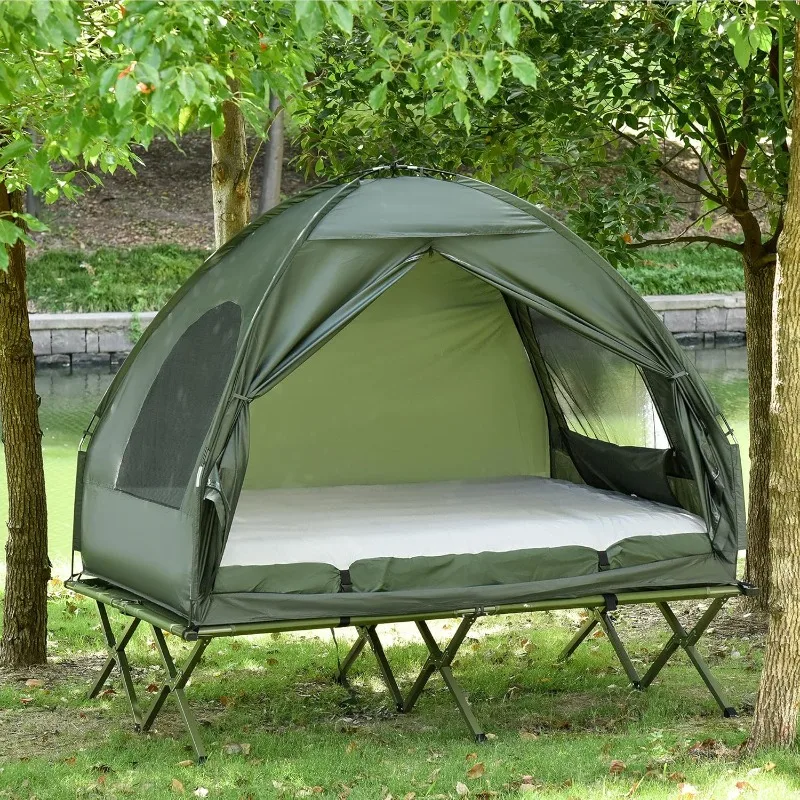
The ultimate guide tent vestibule storage provides additional ideas for maximizing your shelter’s functionality with minimal weight penalty.
Advanced Tips for Comfortable Two-Person Shelter Living
Beyond basic shelter selection and setup, these refined techniques elevate the compact shelter experience for two campers:
1. Maximize Ventilation
Proper airflow prevents condensation and improves comfort:
– Position the shelter to capture prevailing breezes
– Create cross-ventilation by opening vents on opposite sides
– Use walking poles or sticks to prop open rainfly doors in light rain
– Sleep with heads at opposite ends to reduce shared breathing space
– Leave vestibule doors partially open from the top when weather allows
2. Wet Gear Management
Handling damp equipment prevents moisture issues inside:
– Create a designated “wet zone” in the vestibule
– Use waterproof stuff sacks for truly wet items
– Shake off excess water before bringing items into vestibules
– Store wet footwear upside down to maximize drainage
– Position wet gear to catch airflow rather than trapping moisture
3. Strategic Condensation Defense
Beyond basic ventilation, these techniques minimize moisture problems:
– Wipe down interior walls with a bandana before condensation drips
– Position less water-sensitive gear against walls as a buffer
– Minimize in-tent cooking, even with stoves designed for this purpose
– Avoid breathing directly onto shelter walls
– Air out sleeping bags during breaks in good weather
4. Privacy Considerations
Sharing close quarters requires thoughtfulness:
– Establish changing protocols that respect personal space
– Use sleeping bags or clothing items as temporary screens
– Develop signals or communication about leaving/entering
– Pack earplugs and eye masks for sleep schedule differences
– Agree on lighting protocols for midnight activities
5. Noise Management Techniques
Improve sleep quality with these noise-reduction strategies:
– Position rain-prone sections of the shelter away from sleeping areas
– Use clothing to dampen flapping fabric sounds
– Select campsites away from water sources that amplify sound
– Create white noise with a lightweight app (if using devices)
– Identify and fix squeaky tent poles or connection points
These techniques, combined with the fundamental skills covered in our mastering tent packing tips guide, transform good camping into great camping.
FAQs: Compact Shelters for Two Campers
What defines a “good” weight for a compact two-person shelter?
A good target weight ranges from 2-3.5 pounds (0.9-1.6 kg) total packed weight. Ultralight options may dip below 2 pounds but usually involve compromises in space or durability. Shelters over 4 pounds generally aren’t considered “compact” by backpacking standards, though they may offer enhanced durability or features.
How much interior space is truly necessary for two campers?
For most two-person teams, 25-30 square feet (2.3-2.8 square meters) of floor space represents the minimum comfortable area. However, interior volume (affected by wall slope and peak height) matters as much as floor dimensions. A 28-square-foot tent with near-vertical walls often feels more spacious than a 32-square-foot tent with severely sloped walls.
Are single-wall shelters suitable for humid environments with two people?
Single-wall shelters present significant condensation challenges in humid environments when occupied by two people. While proper ventilation techniques help, double-wall designs generally perform much better in these conditions. If you primarily camp in humid regions, the slight weight penalty of a double-wall shelter is usually worth the improved comfort.
Can ultralight shelters withstand harsh weather conditions?
Well-designed ultralight shelters can handle surprisingly challenging conditions when properly pitched. However, they typically require more attention to setup, site selection, and maintenance during storms. For predictably harsh conditions, selecting a shelter with a slight weight penalty but enhanced stability is often the wiser choice.
How to prevent condensation with two occupants?
Two-person condensation management requires a multi-faceted approach:
1. Maximize ventilation options appropriate to weather conditions
2. Choose shelter designs with adequate peak height and volume
3. Use double-wall designs in humid environments
4. Position sleeping areas away from shelter walls
5. Minimize in-shelter cooking and wet gear storage
6. Wipe down interior surfaces before condensation becomes problematic
Is it worth paying more for premium materials?
For frequent users, premium materials typically offer better value over time through:
– Longer lifespan despite lighter weight
– Better performance in challenging conditions
– Improved space-to-weight ratio
– Enhanced comfort through better breathability or condensation management
– Superior packability for the same protection level
Occasional users may find mid-range materials offer a better balance of initial cost and performance. Our lightweight backpacking tent collection includes options at various price points, and the ultimate guide to lightweight tents for long treks provides additional perspective on material considerations.
By focusing on your specific needs and priorities, you’ll find the perfect balance of weight, space, weather protection, and convenience for your two-person adventures. Remember that the best compact shelter is ultimately the one that lets you focus on enjoying the outdoors rather than worrying about your protection from the elements.

